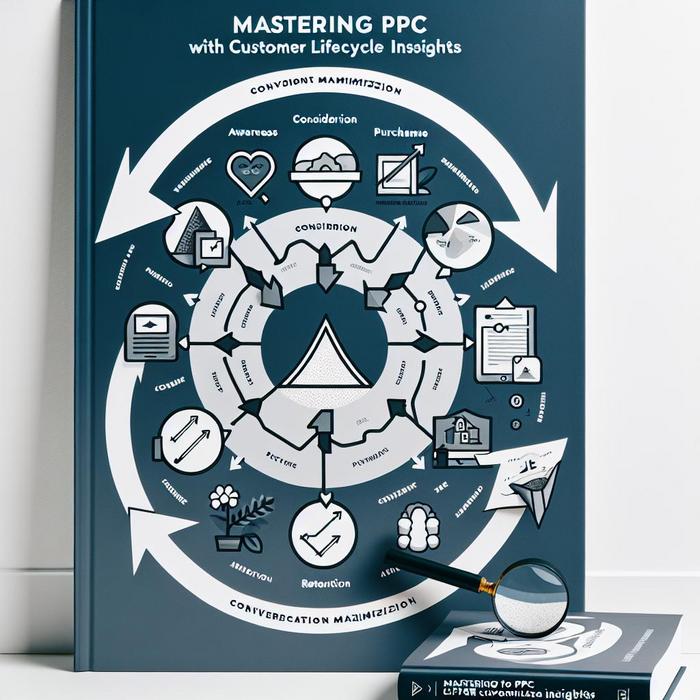Enhancing Business Growth through Strategic Marketing Decisions
Executives make impactful decisions every day that can dramatically shift the fate of their businesses. For CMOs, CGOs, CFOs, COOs, and CEOs, these choices often involve complex marketing strategies and powerful technologies. One powerful tool proving pivotal in their arsenal is an algorithmic approach to advertising, which optimizes marketing spend for maximum returns. This approach, often referred to as automated bidding, is the secret weapon for many seasoned digital marketers.
Understanding the Power of ROI-Centric Advertising Tactics
The advent of automated bidding has revolutionized the way businesses approach online advertising. These solutions form a key component of digital platforms like Google, Meta, and TikTok, providing far-reaching advantages over traditional manual bidding methods. The goal is, quite simply, to maximize the conversion value, thus giving businesses more bang for their buck.
Automated bidding is appealing for two clear reasons, predictability and efficiency. It allows a digital marketing campaign to automatically adjust bids in real-time based on the likelihood of the ad leading to a conversion. This probability is calculated using a wealth of historical data and complex algorithms, making this a task better suited to a machine than a human.
To truly appreciate the benefits of Automated bidding, let’s delve into a comparative analysis of some of the major digital platforms.
Automated Bidding: Google Vs. Meta Vs. TikTok
Google, Meta (formerly Facebook), and TikTok are all powerhouses when it comes to online advertising. However, they each have unique approaches to automated bidding.
Google’s automated bidding, for instance, is part of its Google Ads platform. It employs machine learning to optimize bids for each action or conversion, using a wealth of historical data to inform its predictions. This guide by Wordstream offers a detailed look into Google’s automated bidding.
Contrastingly, Meta’s automated bidding differs from Google’s in that it also factors in user value, optimizing not just for conversion, but also drawing from data on the likelihood that the user will be of high value.
TikTok, meanwhile, combines automated bidding with novel advertising formats like short videos, giving a unique spin to the process and allowing brands to tap into their younger demographic.
The Transformational Impact of Automated Bidding on Business Growth
By transitioning from manual to automated bidding, businesses witness a significant improvement in their conversion rates and overall marketing ROI. For executives, this translates into a more predictable, scalable, and profitable advertising pipeline.
Moreover, automated bidding also means less time spent on the minutiae of campaign management and more time focusing on strategic decision-making. This is crucial for executives who are often grappling with multiple responsibilities and looking for ways to streamline processes.
The optimization of customer lifecycles for maximum conversion rates is a tangible benefit of automated bidding, leading to longer customer retention periods and increased customer lifetime value.
Finding the Right Tools for Successful Automated Bidding
While it’s clear that automated bidding can provide numerous benefits, it’s equally essential to use the right tools to implement it successfully.
Different platforms offer a variety of PPC tools, and choosing the right one can be a daunting task. A detailed comparison of some of the best tools for PPC campaigns can be found in this article by SalesDuo, which provides insights into their features and benefits for effective campaign management.
Whichever tool you choose, ensure it aligns with your strategic goals and delivers tangible results to drive business growth. With the right approach to automated bidding, the establishment of proven ad strategies to boost executive confidence is a definite possibility.
The Nuances of Automated Bidding on Major Digital Platforms
Digital platforms like Google, Meta, and TikTok provide unique benefits and challenges when it comes to automated bidding. Understanding these can be crucial to success in digital marketing.
Google’s extensive database and machine learning algorithms power its automated bidding. It can predict customer behavior and adjust bids in real-time, taking into account an array of factors, like time of day, location, and device settings. This detailed article by AdLeverage presents some essential aspects of Google’s approach and key considerations for marketers.
While Meta employs a similar machine learning approach, it uses a feature called ‘ad set budget optimization.’ This tool redistributes ad budget to top-performing ads in real-time, a strategy that yields a better return on ad spend.
On the other hand, TikTok, with its focus on short video content, introduces a creative challenge for marketers. The platform’s automated bidding algorithm favors engaging and high-performing creatives, making the actual ad content as essential as the bidding strategy itself.
Unleashing the Potential of Automated Bidding
Successful automated bidding strategies revolve around the optimal use of data and leveraging platform-specific capabilities. These interventions can help businesses garner significant attention and draw high-quality leads, thereby ensuring significant business growth.
For instance, implementing new-age targeting techniques can improve ad effectiveness drastically. The right advanced targeting efficiency strategies can be an asset in gaining a competitive edge.
Similarly, data can also be used to build customer loyalty. Detailed insights from past interactions can be leveraged to create bespoke experiences and personalized offerings. Explore techniques on building customer loyalty with data-driven retention strategies for further insights.
The Increasing Relevance of Automated Bidding Across Industry Verticals
The efficacy of automated bidding isn’t limited to certain industry verticals or business types. Whether it’s retail, banking, healthcare, or manufacturing, automated bidding can substantially optimize marketing outcomes.
Where customer acquisition costs are high, automated bidding can be the key to keeping marketing budgets within manageable limits. By determining the approximate value each customer brings, businesses can make more informed decisions that yield a higher return on ad spend.
The Road Ahead: Evolution of Automated Bidding
The future of automated bidding promises to be even more exciting. With advancements in artificial intelligence and machine learning, it’s not far-fetched to imagine systems that can understand not just ‘what’ of customer behavior but also ‘why.’
Furthermore, as the digital ecosystem grows more complex with rising numbers of digital platforms and stakeholder touchpoints, automated bidding will become vital to managing this complexity. Equipped with the right bid management tools, marketers can stay ahead of the game, driving business growth.
In the end, the true measure of success lies not in the complexity of strategies employed but the value they deliver, reinforcing the fundamental principle of automated bidding.
Enhancing Brand Awareness through Automated Bidding
Lastly, automated bidding plays a significant role in enhancing brand awareness. Visibility is critical, and reaching the right people takes both time and investment. Automated bidding strategies streamline this phase, improving the likelihood of your ads reaching those most likely to convert.
Explore ways of enhancing brand awareness through optimization tactics for an in-depth understanding of how this innovative approach can greatly benefit your brand’s recognition.
Through strategic implementation of automated bidding, businesses can enhance their marketing outcomes, build on existing customer relationships, increase brand awareness, and secure a promising future grounded in data-driven decisions.











